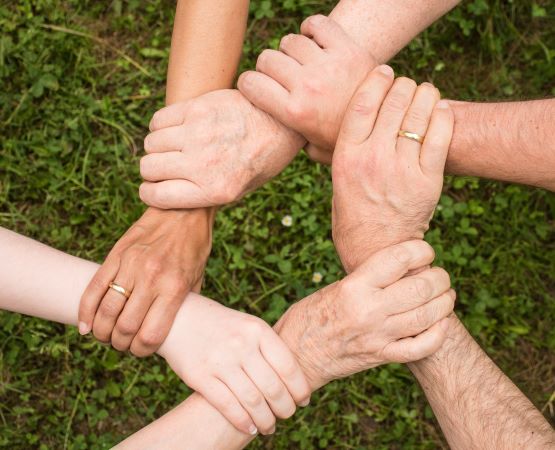Partnership Working Insights from Barnardo's CEO: Uniting for Impact – See, Hear, Respond
This article was written by Javed Khan, CEO, Barnardo's
The Covid-19 crisis has created a perfect storm- increasing the vulnerability of children and young people across the UK, whilst compromising the ability of charities and agencies to identify their needs and respond effectively.
It is in this context that we conceived See, Hear, Respond – an extraordinary response to an extraordinary and urgent set of needs.
As I recently said at an Education Select Committee meeting, the historical models of compelling providers to compete in the provision of services, rather than collaborate, is fundamentally flawed. This is a unique opportunity to change it.
What we need is genuine strategic partnerships based on interdependent working, where we come together to identify what the problems are and what the solutions could be. The Rebalancing the Relationship report by ACEVO and NCVO is a welcome intervention in the debate, highlighting ways in which charities can deliver services in collaboration and unite for maximum impact. I feel this is a precondition of success for the sort of ‘social covenant’ set out in Danny Kruger MP’s ‘Levelling up Communities’ report, where charities and Government can work together for the common good.
Barnardo’s 10-year strategic approach resonates strongly with the recommendations in the Rebalancing the Relationship report and in particular with the need to collaborate widely for impact, supporting other charities, and compete in an ethical and responsible way. One way of embracing this for us has been to regularly support smaller local organisations that do good work by sharing our back office services and facilities with them- helping to take the pressure off them through periods of adversity.
In 2020, in the first few months of the pandemic we had the chance to further commit to collaboration. Rather than seek funds from the government for Barnardo’s to support vulnerable children all on our own, we chose to do something far more ambitious. We proposed to create a Barnardo’s led coalition of 10 to 15 partners across the country to reach the hidden victims of the pandemic. We also committed to distributing at least 70% of any funds from the DfE to those partners. With DfE support, we set about building a coalition of large and small, national and local partners. Within a few weeks the partnership grew to over 80 partners, all committed to reaching the ‘hidden’ children and young people that needed our support. Most pleasingly, within this, 40% of partners were BAME led charities and community organisations. To date, the See, Hear, Respond programme has reached over 50,000 vulnerable children and young people through holistic focus on families and communities, helping them cope with changing and increasing adversity. And along the way, I’m really pleased that 74% of all income from the DfE has been distributed across the partners. Many of these partners have said that without this funding their organisation would have ceased to exist.
So Why Did We Do It?
Doing it all ourselves would have been much easier! But by working in partnership with local and national charities and community-based organisations, See, Hear, Respond has been able to reach far more children, far more quickly, than would otherwise have been the case. But also, beyond supporting huge numbers of vulnerable children and young people to date, the partnership has proved to be instructive in demonstrating how a collaborative, delivery model can be built at pace.
We have been able to build new levels of capacity and share expertise with a small number of large charities to provide national coverage alongside over 70 grass roots local partners. These crucial place-based partners have been able to reach and support the most vulnerable and more 'hidden' children and families at the community level. At the same time, through this collaboration and support from the wider network, many of our local partners have improved their capacity to support their communities, not just for now but in the longer-term.
The challenge is enormous, but our collective ability to make this approach work in the first six months of the crisis led to a funding extension for the partnership from the DfE through to the end of March 2021.
And What Did We Learn?
Learning has been an inherent part of the process. We’ve grown our understanding of how difficult it is for small organisations to access major funding- they don't always have the developed systems in place that major funders expect and need. With a relatively modest investment in developing the capacity of these partners along the way, and taking responsibility for handling the bulk of the bureaucracy, we’ve played a part in helping unleash the full potential of some truly brilliant local partners.
We’ve been humbled by what we’ve learnt and more motivated than ever to develop a partnership of equals- built on trust; responsiveness; and sharing of knowledge, insight and expertise. The success of the partnership, as opposed to Barnardo’s securing funding and going it alone speaks for itself, and is a vindication of our long held belief that interdependent partnership working is in the best interests of all our beneficiaries.
After 7 years at the helm of Barnardo’s, I have no doubt that this is the best way to deal with the increasingly complex, overlapping, and often place-based challenges facing children today - all hugely exacerbated by the pandemic.
‘Hard to Reach’ Communities
An important strength of this way of working is that we are able to reach different groups of children - providing the type of support they need to thrive. This is far more than the traditional ‘outreach’ work that we are all accustomed to. We are ‘reaching in’ to communities, supporting local people to do local work, built on local knowledge, experience, skills and most importantly trust. Committing to work in this way makes the ‘hard to reach’ become very reachable.
Barnardo's supports a huge diversity of children and young people in our services, with around 20% deriving from Black, Asian and other minority ethnic communities and the remaining 80% from white communities, all sharing the similar challenges and adversity of poverty, poor mental health, disadvantage, disability, and identity discrimination.
As a result, last summer, See, Hear, Respond was also able to reach and provide support to children and families in disadvantaged white communities who felt left behind at school with no way of catching up. Many of these children were avoiding school, often saying they didn’t see the point because there wouldn’t be jobs to go to anyway. By providing detached youth work and talking to these children where they were - often out on the streets - we have been able to make them feel heard and support them to return to school.
Suffice to say we’re all extremely proud of what we’re achieving through the See, Hear, Respond programme. The challenges facing vulnerable children and young people during the pandemic are too complex for any one charity or agency to address alone.
Through this programme we’ve demonstrated what is possible when all partners have a common aim and sense of urgency - and have become convinced that this type of collaborative delivery model will be needed long after the pandemic is over.
In the years ahead, greater partnership working will need to become central to all we do for children and young people facing crisis. There is no doubt that 2021 brings fresh adversity. Despite the vaccine programme, the legacy of COVID will continue to affect vulnerable children and families for months and years to come.
We’re still processing our learning from See, Hear, Respond, and will look carefully at our own systems in light of this and the lessons from ACEVO/NCVO’s recent report. What is already clear in my mind is that Barnardo’s needs to continue to champion and model working interdependently across organisations and sectors. This will be critical to our impact moving forwards to meet the growing needs of our service users.


